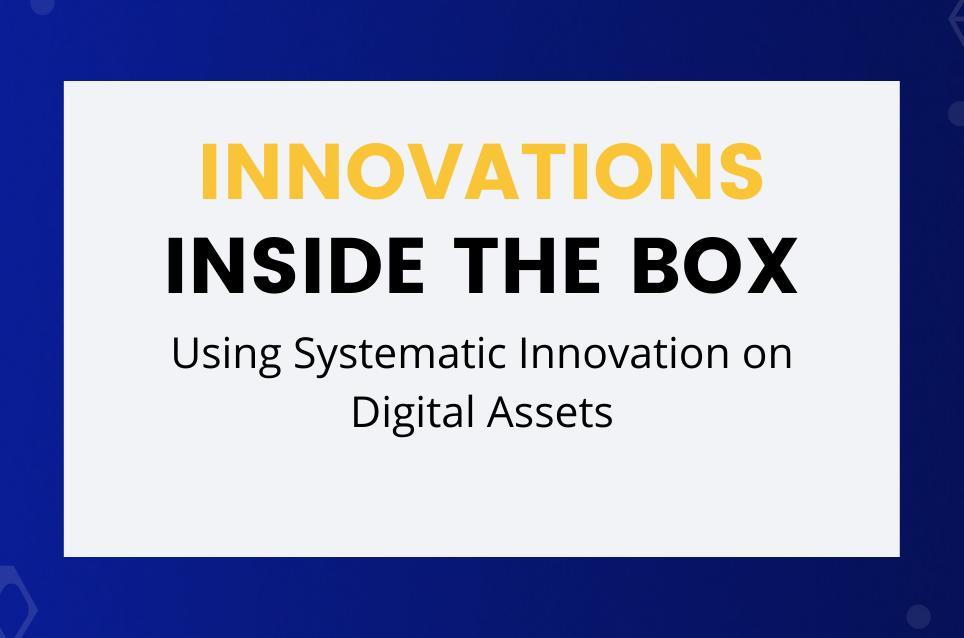The SIT method is great for creating exciting new products and services. Now I want to show you how to apply these techniques to digital assets. For example, let’s apply the Attribute Dependency technique to a website. You start by listing the internal and external attributes of the site like the one here.
Internal:
1. color
2. design
3. graphics
4. information
5. link locations
6. page loading speed
7. contact information
8. length of text
External:
a. number of visitors
b. type of visitors
c. location of visitor
d. SEO page rank
e. search requests
f. type of browser
g. type of computer
Next, randomly pair an external attribute with an internal one. and imagine a relationship between the two attributes. For example, “location of visitor” and “graphics,” meaning how the information is displayed on your website. As the location of the visitor changes, the information and graphics that you display on your website changes. Why would that be valuable? In what situations would it make sense to have that relationship in place?
Think about it. Imagine if your customer is browsing your website right inside one of your retail stores. Perhaps you would change the kind of information and graphics you would use to show your products. What if they were browsing your website from one of your competitor’s stores? Could that change how you display competitive pricing information? What if your customer is browsing within a healthcare facility, or from an airport, or inside a restaurant? Would it change the products, the prices, or other service elements that you display? It just might. Applying attribute dependency can make your website responsive and adaptable. It services your clients better by understanding more about them.
Let’s apply this same approach to a social media application. For this example, let’s use Facebook. Here are the internal and external attributes of a Facebook Page.
Internal
1.number of friends
2.wall postings (by you)
3.pokes
4.status
5.years on Facebook
6.gender of friends
7.degree of friendship
8.emotional state
9.nature of friendship
10.age
11.current location
12.current activity
13.photos with other people
External
a.time
b.likes
c.size of friends’ network
d.wall postings (by others)
e.status of friends
f.friend’s demographics (age, gender, etc)
Let’s imagine a relationship between “likes” and “wall postings.” There is no relationship there now, so let’s imagine one. For example, as the number of “likes” increases over a particular period of time, your wall postings change. Why would that be beneficial? Perhaps you would put different products or special promotions there once you reach a certain level of likes. In other words, you change how you engage with your customers who visit your Facebook page based on how they engage. A relationship between these two attributes would give you a cue to know when it’s appropriate to do something different on your page.
Let’s go further with digital innovation and look at mobile apps and how to apply SIT techniques. For these, I like to use the Task Unification technique. We create a virtual product by saying: the App has the additional job of addressing this business issue. The trick is to pick an app that has absolutely nothing to do with the issue now. That’s where you find some surprising innovations.
Let’s do an example. Imagine your company makes a household product that helps get rid of odors in your home. It’s a spray product that you would use to get rid of odors from your cat or dog. Imagine you’re the marketing manager for this product and you want to find creative ways to promote its benefits.
First, find a list of mobile apps. Pick one of these randomly and plug it into the phrase: “the app has the additional job of promoting my product.”
Here is an app called Micello, a provider of comprehensive indoor venue mapping. It’s like Google maps only for in indoor spaces like shopping malls or airports. You imagine this app has the additional job of promoting your spray for pet odors. What would be the benefit? How it would work, and how would it increase brand awareness of your product? Suppose this technology is used to create an internal map of your home. What if it could also track where your pet spends its time as it moves from room to room. Perhaps the app creates an odor heat map of where the pet has been so that you know exactly where to spray the product. I love this idea because it’s both functional and it reinforces the brand promise.
Task Unification can help find new uses for existing apps, and it can help you create completely new apps.
Your digital assets are just as important as your products and services. Using the SIT Method will unlock more value for your customers and find new ways to engage them more effectively through digital channels.





